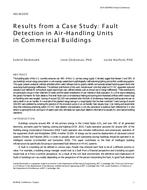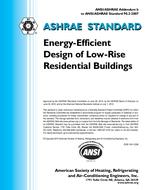Click here to purchase
Particle resuspension is the phenomena where deposited particles leave the surface they are adhered to; and rejoin the bulk airflow to higher levels in thespace. Therefore, resuspension constitutes a concern to human health as resuspended particles can reach the human breathing space, deteriorating air quality.In indoor spaces, resuspension occurs due to indoor human activities generating both aerodynamic and mechanical vibrations disturbances. Due to thesedisturbances, the adhesive forces are overcome by removal forces. In the present work, a simplified mathematical model was developed to predict, through aprobabilistic approach the rates of particle resuspension from indoor surfaces due to indoor activities. The model was coupled with a 3D transientcomputational fluid dynamics model of a falling disk on a surface, representing an indoor activity (falling object, walking, prostration…). The computationalfluid dynamics model predicts the airflow field behavior due to the occurring activity. The resuspension model accounts for the adhesive forces existing betweenthe particle and rough surface, and the reduction of adhesive forces due to vibrations. Additionally, the model computes the lift and drag forces and momentsdue to the fluid flow, specifies the resuspension condition and computes the resuspension fractions from the surface. The resuspension model was validated bypublished experimental data on particle resuspension due aerodynamic and mechanical disturbances and good agreement was found. Results showed thatparticle resuspension reached a peak during the first 25 seconds of the disturbance before decreasing to negligible background values. Resuspension fractionsalso increased when vibrations accompanied the aerodynamic disturbances. A sensitivity analysis on the velocity of the falling object was conducted where itwas found that resuspension fractions increased with an increasing fall velocity. Moreover, different types of indoor surfaces were tested and it was concludedthat the resuspension fractions were the smallest for glass surfaces, followed by marble and linoleum. It was also found that altering the surface characteristics(e.g. decreasing surface roughness) increases adhesive forces, and stiffness values reducing the effect of vibrations on reducing adhesion and enhancingresuspension. Additionally, the proper choice of ventilation design can reduce the effect of aerodynamic forces on the particle, and hence reduce resuspension
Citation: 4th Intl Conf: Efficient Bldg Design
Product Details
- Published:
- 2020
- Number of Pages:
- 8
- Units of Measure:
- Dual
- File Size:
- 1 file , 1.1 MB
- Product Code(s):
- D-ICEB20-17


